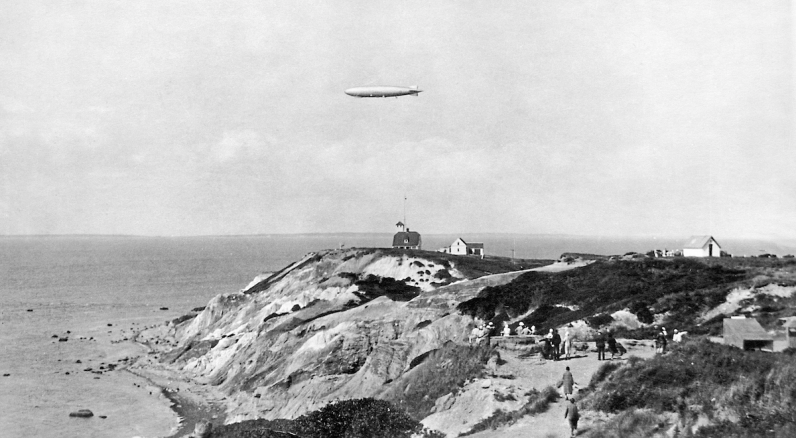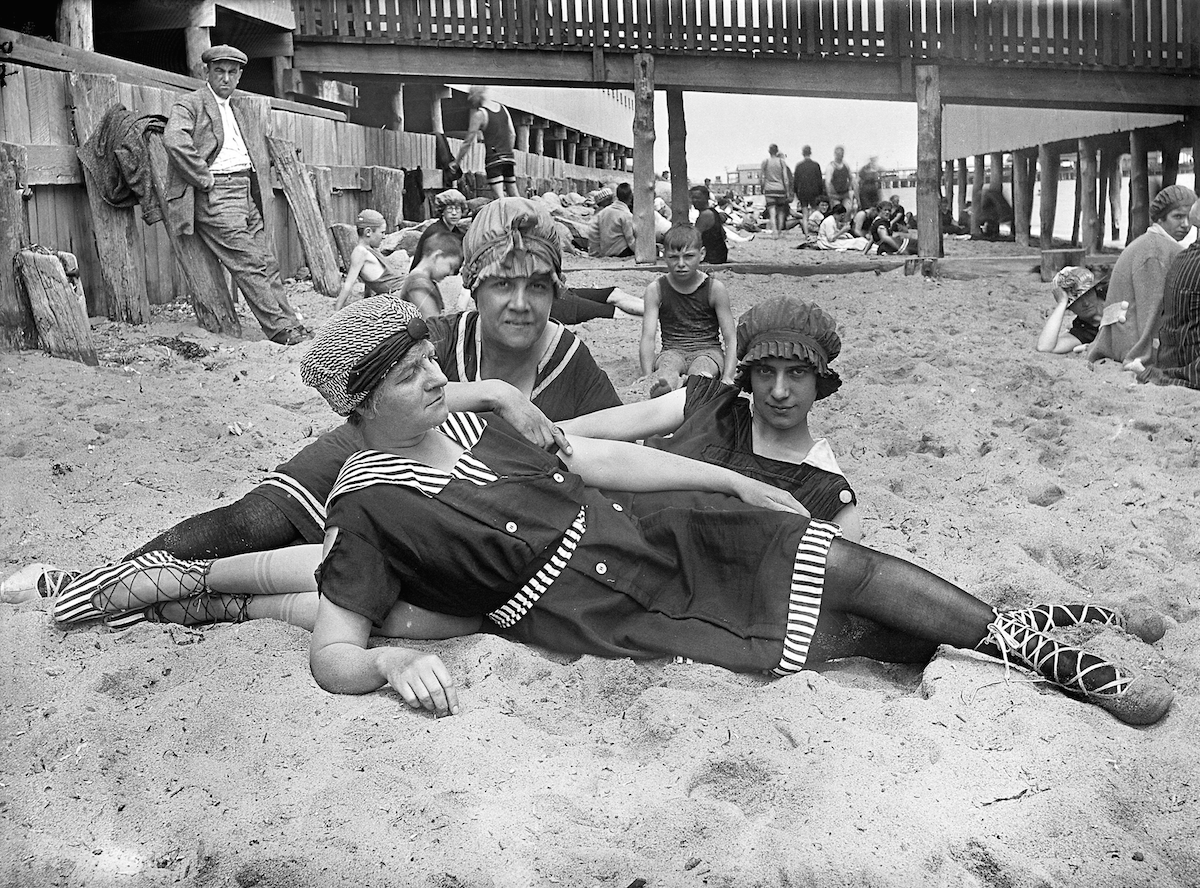Chris Baer teaches photography and graphic design at Martha’s Vineyard Regional High School. He’s been collecting vintage photographs for many years. He regularly shares his findings in the MV Times and our various publications and properties.
This Was Then: Bathers
Three unidentified beachgoers (above) show off their outfits at the “bathing beach” in Oak Bluffs about 1920. Bathers arrived fully clothed and then changed into their bathing costumes in one the dozens of bathhouses visible on the left. Daredevils would dive from the wharves and rafts while others would climb the enormous boulder known as “Lover’s Rock” (off-camera to the viewer’s right), but most would forego the water altogether or simply bathe. The steamer wharf is seen in the distance where visitors would arrive on one of the aging sidewheel steamers arriving from New Bedford and Woods Hole. Bathing was not a popular activity until the end of the 19th century, and until 1896 the Martha’s Vineyard Railroad, connecting the steamer wharf to Katama’s Mattakeesett Lodge, dominated much of this waterfront.

This was then: Zeppelin over Gay Head
An airship floats past the Gay Head Cliffs in the late 1920s or early 1930s, to the delight of chilly onlookers.
Dan Grossman of Airships.net identifies this vessel as the U.S. Navy’s ZR-3, the U.S.S. Los Angeles. Built in Germany by the Zeppelin Co., the ZR-3 was delivered to the U.S. Navy in 1924 in what was to be the world’s last nonstop transatlantic flight until Lindbergh’s famous solo flight in 1927. It was over 650 feet long, with a crew of 43, and built with all the accommodations of a long-distance commercial airliner, including sleeping compartments and a first-class galley. For the next eight years, this helium-filled airship flew hundreds of goodwill, publicity, and training flights around the United States and as far south as the Panama Canal. Its final flight was in 1932.
The Gay Head Life Saving Station is visible here at cliff’s edge directly below the passing airship.




